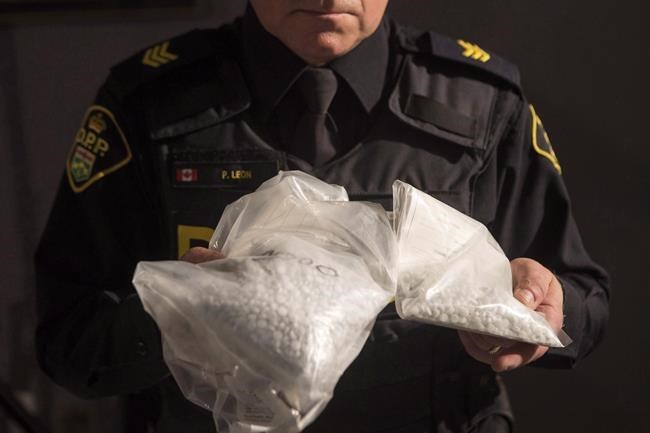TORONTO — Opioids killed more people in Ontario in the second year of the pandemic compared to the first, but the province saw a drop in those deaths this past March, newly released data shows.
About eight people per day died from opioids in the second year of the pandemic, preliminary data from Ontario's Office of the Chief Coroner shows. From April 2021 to March 2022, 2,790 opioid-related deaths were recorded, up slightly from 2,727 in the first year of the pandemic.
Those were both large leaps from 2019, when opioids killed 1,559 Ontarians – about four people per day.
"It's ongoing and it's bad and it got heck of a lot worse during the pandemic," said Dr. Dirk Huyer, Ontario's chief coroner, in an interview.
But the data also shows the death rate dropped by 10 per cent in the first quarter of this year compared to the same time frame last year. The data is considered preliminary because it includes both confirmed and probable opioid-related deaths and is subject to change, Huyer said.
"Should we be celebrating the fact that we've gone down 10 per cent?" Huyer said. "No. We still have a lot of people dying, but, yes, we're not continuing to go up, so that is good."
The number of overall deaths dropped by 31 per cent in March 2022 compared to March 2021. Ontario lifted most COVID-19 restrictions that month, although Huyer said at this point that is simply a correlation, not necessarily the cause for the drop.
Overall, the mortality rate for opioid toxicity in 2021 was 19.5 deaths per 100,000 people – more than double the rate of 9.1 deaths per 100,000 people in 2017.
The data suggests to Huyer that the leap in opioid deaths during the pandemic was due to more people using drugs on their own due to fewer services being available in their communities.
"That community is now opening back up so there's some support from a safety perspective, but also support for mental well-being and, in general, things being better overall," Huyer said.
He also said border closures may have had an effect on the drug supply.
Northern Ontario remains hardest hit in Ontario and the problem is getting worse, with the area having more than double the mortality rate of the entire province.
"Thunder Bay, Sudbury, Algoma, just significant increases," Huyer said.
Thunder Bay District Health Unit had an opioid death rate of 82.1 per 100,000 people in the first quarter, which was the highest rate in the province and more than four times the provincial rate.
Public Health Sudbury and Districts was next highest with an opioid death rate of 57.9 per 100,000 while Algoma Public Health – in and around Sault Ste. Marie, Ont. – was third with a death rate of 52 per 100,000.
Men continue to die from opioids at a disproportionate rate, accounting for three out of four deaths in Ontario. Men aged 25 to 44 accounted for 54 per cent of deaths in the first quarter of 2022.
Fentanyl remains the most common substance found in those who died from opioids, the data shows. It was involved in 88 per cent of deaths in 2021, up from 86 per cent the year before – which itself was a big jump from 53 per cent in all opioid deaths in 2019.
Tara Gomes, an epidemiologist at Unity Health in Toronto who studies opioid use, is cautious about the recent dip in deaths, saying that data remains preliminary.
"It's so hard to know for certain right now, but it's better than the alternative, which is what we keep seeing during the pandemic," she said.
"But it's important to remember that eight deaths a day compared to four deaths a day before the pandemic is just such a big change."
Her work has focused on the disparities between cities and rural areas as well as the challenges up north.
"I think that a lot of the harm reduction services that we have are really designed to work well in an urban setting, but in larger areas or rural areas, it's a lot more difficult to plan and manage," she said.
Gomes said the province and the federal government need to relax rules on proven opioid treatments like suboxone and methadone, vastly expand harm reduction and safe spaces to use drugs, as well as a safe supply of drugs.
Her research has found that opioids are disproportionately killing the homeless population and the unemployed during the pandemic. It has also greatly affected construction workers, her research shows.
"We still haven't solved this," she said.
This report by The Canadian Press was first published Aug. 23, 2022.
Liam Casey, The Canadian Press

